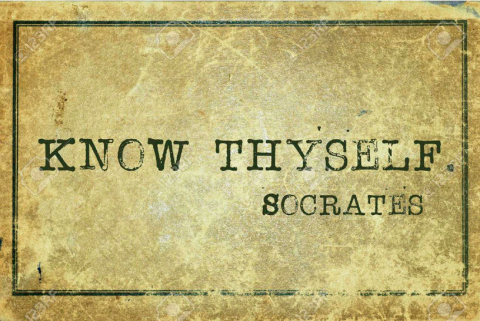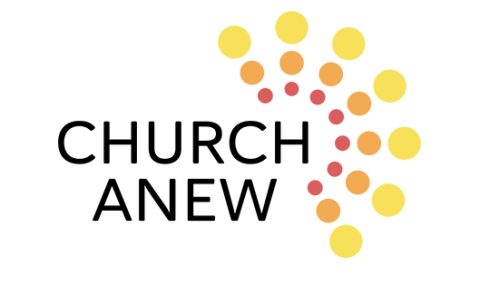Blog
6 Methods for Team Decision Making
6 Group Decision Making Methods
It's good to be aware of different decision-making methods groups or teams can use, and choose an appropriate method for the kind of task or decision being worked on. If we are not intentional about chosing a method, we may fall into a default method that might be less helpful for our team or task. So, take a look at these 6 methods for decision making and then discuss with your team so the best method can be employed for your work.
1. Decision by Lack of Response (Plop)
This method is evident “when someone suggests an idea, and, before anyone has said anything about it, someone else suggests another idea, until the group finds one it will act on. All the ideas that have, in a real sense, been decided on by the group. But the decision has been simply a common decision not to support them,... read more
7 Ways to Create Psychological Safety
What is Psychological Safety?
It is the creation of a safe space for people to risk being themselves, sharing ideas, wondering and doubting. Meaningful change or even strategic renewal requires psychological safety, (sometimes called interaction safety). Healthy organizations have psychological or interaction safety. It allows you to leverage your people for ideas, for change, for ownership of mission, for benefiting from the best people have to offer.
“Interaction safety creates an environment through intentional actions and behaviors that encourage reasonable risk-taking, sharing ideas, and creating an inclusive, collaborative workplace. It is an environment that makes people feel safe enough to share not just their best ideas, but their still-in-formation ideas.
When interaction safety exists, people know they... read more
Did It Work? 4 Steps to Measure Impact of Change
Organizations try new things all the time. We may see someone else do it and copy it. We may get an inspiration and try it. Others innovate to push the envelope. No matter how you get to that point of change, it’s a gamble. How do we know if our efforts are worth it?
Lucky for us, people have asked this question before. Donald Kirkpatrick wondered about this very thing and, in 1959, developed the Kirkpatrick Evaluation Model. It’s been tweaked over time to meet challenges of the day. But Don was onto something. He wanted to know if what was changed made any difference at all: for individuals and the organization.
Here are Kirkpatrick’s Four Levels of Evaluation you can use to identify how change is working in your organization.
Level One-... read more
The Case for Change
One thing leaders everywhere know is that the world is changing, and it’s changing at a rate faster than ever. We know our organizations need to adapt in order to be helpful, relevant, and viable. Leaders work hard to imagine changes that will help their church or organization to engage people in new and helpful ways and to implement those changes.
However, if you are a leader, you have probably been frustrated by investing yourself (and the energy of other leaders) in changes only to have your plans and efforts dissolve into what seems to be the indifference of the organization.
This often occurs because people do not “buy into” the problem leaders are trying to address with the change. Usually it’s not that people don’t care or are uninterested. It’s more often that they don’t appreciate why change needs to occur. The case for change simply hasn’t been made... read more
Mission and Vision- Organizational Compass and Destination (Podcast)
Sometimes mission and vision are confused. Sometimes mission and vision are neglected. Sometimes mission and vision are ignored because it's too hard to work on, it's too much time away from operations, the ROI isn't always direct. Let me see if I can help. (Link to a podcast conversation about mission and vision)
Mission is a short description of your organizational purpose or reason for being. It should be specific enough to act like a compass to determine direction, chart new paths and help your organization say no if things don't fit. Mission is not a list of programs, a description of structure, location, unique delivery of services. It is your reason for existence.
Vision is a compelling picture of the preferred future. Vision acts like photos or videos of... read more
Working Myself Out of A Job. Consulting Myself Away
Hopefully, my job is going to be obsolete! I will have done all I can do as a consultant for nonprofits. I will lock up the office and figure out what’s next.
Some consultants want you to be dependent on their expertise. They come in and do the work for you and want to be hired over and over and over again. But this model of consulting leaves you no better than before- with little understanding, tools and processes for your own organizational health. I want you to learn it all, own it and live it. Don't worry, I will find something else to do when we are done.
Here is the secret that nobody wants to talk about:
a consultant’s purpose is to help you learn so you do the work on your own in the future. Hiring a consultant to help with visioning and strategic planning, leadership development, change initiatives, conflict etc., should help you (as... read more
The Key Question for Your Church’s Organizational Health
When most people think about church, very few think of words like governance, staffing, and organizational health. However, the question of how a congregation is organized and governed is critical for leaders who want to have the most impact they can through their ministry.
Moses knew it (Exodus 18). King Solomon knew it (1 Kings 4). So did Peter and the disciples (Acts 6). For churches to function in healthy alignment with God’s mission for them, leaders need to focus resources, delegate authority, and have intentional systems of accountability.
Five basic organizational components of congregations are:
- The congregation
- The board (council, session, consistory, etc.)
- The pastor(s)
- The staff
- The ministries and commissions (committees, ministry teams, etc.)
Ultimately, each component needs to be... read more
KNOW THYSELF: The First Step in Organizational Change
“There is no power for change greater than a community discovering what it cares about.”
-Margaret Wheatley
Have you ever had the conversation with a spouse or friend about where to go out to eat? “I don’t care, wherever” is the worst four words you can hear when planning a night out. If no one cares or puts forth an option, you can spend lots of time volleying back and forth with “I don’t care, wherever. I’m open to anything. I don’t’ know what I want.” One night my husband and I gave up going out entirely and made a frozen pizza one evening because we were so frustrated with our inability to pick a restaurant. It was even a rare date night without kids. That’s just plain sad.
A similar phenomenon exists for organizations as they prepare to move into any kind of change. Someone has to be hungry enough to start the conversation about... read more
HELP! We Took the Survey and Now What? Life after the Vitality, CAT, and LEAD surveys
Many churches had taken the Congregational Vitality Survey, The CAT, or the LEAD Congregational Assessment in the last few years. They come to us not knowing what to do with that information. Leaders ask if they should be making strategic plans, or reworking their mission statement, or aligning their ministries. They ask for help making sense of the data. What is good information? What do we take action on? Where do we go from here?
Quantitative data alone is not enough! It’s not enough to create change, shift culture, create a vision, move a congregation in to alignment of mission. Survey data is important because it tells us some things about areas of strength, challenge, future needs etc. But surveys can't bring people together to hear how God is at work. Quantitative data doesn’t facilitate conversations with neighbors in need, or show us how we might work... read more
Dreading Stewardship
Every fall, leaders of churches around the country get a sense of the “dreads.” What’s the dreads? The definition in this case, it is not looking forward to, or dreading the fall stewardship season. Leaders ask, how can we talk about money in new and interesting ways? How can we get people to give more?
Things seem to be changing, including how we talk about money. People are shifting how they relate with money. For instance, I pay the guy who mows my lawn when we are on vacation, with Venmo, an app on my phone. I’ve never met the guy, I couldn’t tell you what he looks like. But he gets money from my phone app. Bills are on autopay. Checks are cashed remotely. Giving offering used to be an intentional and physical act of counting out cash or writing a check and putting in the offering plate in worship. But it isn’t the only way to give. In fact, if our churches only rely on... read more









